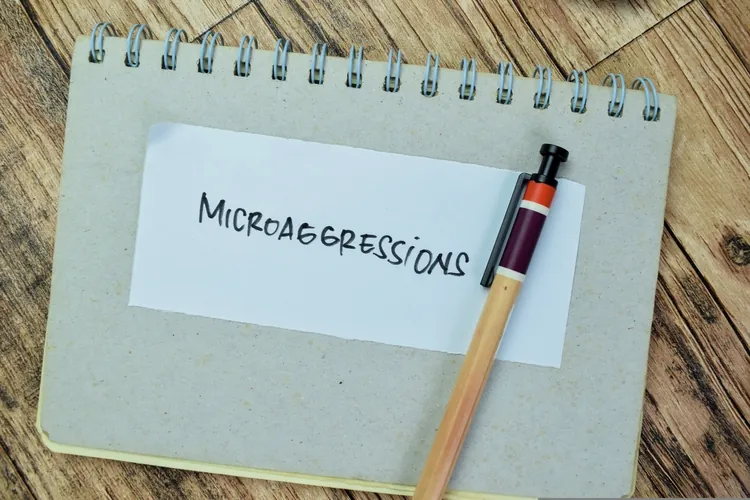Experiencing or witnessing unfair treatment at work can be deeply distressing. Knowing how to handle racial discrimination in the workplace not only safeguards your professional well-being but also contributes to a more equitable workplace for everyone. Whether you’re an employee, manager, or HR professional, this actionable guide empowers you with practical steps, legal context, and real-life examples for tackling racism at work confidently and effectively.
Understanding Racial Discrimination in the Workplace
What Is Racial Discrimination at Work?

Racial discrimination in the workplace occurs when someone is treated unfairly or differently because of their race, ethnicity, color, or national origin. This can manifest as:
- Denial of opportunities (hiring, promotions, benefits)
- Unequal pay for similar work
- Racial harassment or bullying
- Segregation or exclusion from projects or events
- Victimization or retaliation for reporting discrimination
- Stereotyping and microaggressions
Laws in Canada, the U.S., and many other countries prohibit racial discrimination in all aspects of employment, covering hiring, employment terms, and termination.
How Racial Discrimination Can Appear
- Direct Discrimination: Explicit unfavorable treatment based on race or color (e.g., refusal to promote).
- Indirect Discrimination: Seemingly neutral policies that disadvantage a specific racial group.
- Harassment: Offensive remarks, jokes, or behavior targeting race.
- Microaggressions: Subtle, usually unintentional behaviors or comments that perpetuate stereotypes.

Step-by-Step Guide: How to Handle Racial Discrimination in the Workplace
Step 1: Recognize and Document Racial Discrimination
Being able to identify racial discrimination is the foundation for any action. Document each incident in detail:
- Date, time, and location
- Names of those involved and witnesses
- Description of the behavior or incident
- Related emails, messages, or other evidence
This log will be invaluable for internal investigations and potential legal proceedings516.
Step 2: Know Your Rights and Company Policies
Familiarize yourself with the anti-discrimination policies and complaint procedures in your workplace. Your rights are protected under national and provincial laws, including:
- Right to fair treatment regardless of race, ethnicity, or color78
- Protection from retaliation for making a complaint7
Check your employee handbook or HR portal for guidelines.
Step 3: Address Issues Internally

Whenever possible and safe, address your concerns with:
- Your immediate supervisor or manager
- The Human Resources department
- A union representative (if applicable)
Submit a written complaint—clearly describe the incident(s), the impact on you, and any supporting evidence. Request a meeting to discuss concerns and seek resolution.
Step 4: Seek External Help if Internal Resolution Fails
If your employer does not resolve the issue appropriately, consider:
- Filing a complaint with a Human Rights Commission:
- In Canada, use the Canadian Human Rights Commission for federally regulated workplaces, or your provincial commission for others.
- In the U.S., contact the Equal Employment Opportunity Commission (EEOC).
- Consulting an employment lawyer:
- Lawyers who specialize in workplace discrimination can help you assess options, mediate, or pursue further legal action.
There is usually a deadline for filing external complaints (often 12 months from the incident).
Step 5: Focus on Your Well-Being
Experiencing racial discrimination can affect your mental health. Consider:
- Seeking support from trusted colleagues or employee assistance programs
- Accessing counseling or mental health resources
- Joining workplace affinity groups or external support networks
Best Practices for Employers and Managers
- Foster Inclusive Cultures: Promote open dialogue, inclusivity, and a zero-tolerance policy for harassment.
- Provide Training: Run anti-racism and unconscious bias workshops regularly.
- Establish Clear Reporting Channels: Ensure employees know how to report discrimination safely.
- Respond Promptly: Investigate all reports thoroughly, impartially, and with sensitivity.
- Support Those Involved: Protect complainants and witnesses from retaliation and provide them with guidance.
Practical Examples: Handling Racial Discrimination at Work
Example 1: Reporting Microaggressions
A Black employee frequently receives backhanded compliments about being “well-spoken” for their background. They log incidents, report to HR, and the employer addresses it through sensitivity training.
Example 2: Unequal Promotion
An employee of color, consistently passed over for advancement, documents performance reviews and interviews. After HR fails to address concerns, they file a complaint with the relevant human rights commission, resulting in a mediated settlement.
Table: Actions and Outcomes When Handling Racial Discrimination
| Step | Action | Potential Outcome |
|---|---|---|
| 1. Recognize and Document | Log all incidents in writing | Evidence for complaint or legal proceedings |
| 2. Know Your Rights & Policies | Review laws & workplace rules | Clear understanding of next steps |
| 3. Report Internally | Notify HR or manager | Resolution, investigation, or corrective action |
| 4. Escalate Externally | File with human rights body, seek legal help | Enforcement, mediation, or legal remedy |
| 5. Self-Care and Support | Access counseling/support groups | Emotional well-being, recovery |
How to Support Colleagues Facing Racial Discrimination
Creating a truly fair workplace requires everyone to be involved—not just those directly affected by racial discrimination. Allies and coworkers can make a significant impact by:
- Listening and Believing: Respect and validate colleagues’ experiences without minimizing their feelings or questioning their perception.
- Speaking Up: Challenge racist remarks, jokes, or behaviors when you witness them, whether they are overt or subtle.
- Offering Practical Help: Assist with documenting incidents, accompany colleagues when they report issues, or simply offer emotional support and encouragement.
- Promoting Inclusion: Encourage participation from all team members, advocate for diverse representation on high-visibility projects, and ensure everyone’s contributions are valued.
Role of Employee Resource Groups (ERGs) and Affinity Groups
Employee resource groups focused on racial or ethnic identities promote a culture of inclusion and support within organizations. These groups:
- Provide safe spaces for open discussion and peer support.
- Offer professional development, mentoring, and networking support tailored for employees from underrepresented backgrounds.
- Advise organizational leadership on how to improve policies and workplace culture.
- Organize events and training that raise awareness about racial equity issues.
Supporting or joining these groups amplifies collective voices and drives change across the organization.
Handling Racial Discrimination as a Manager or HR Professional
Managers and HR professionals hold unique responsibilities in preventing and addressing racial discrimination:
- Set Clear Expectations: Publicly communicate and enforce a zero-tolerance policy for discrimination.
- Act Promptly: Investigate all complaints thoroughly and confidentially, ensuring fair and unbiased processes.
- Train Continuously: Provide regular training on bias recognition, cultural competence, and respectful conduct.
- Monitor Workplace Climate: Use employee surveys and feedback tools to gauge sentiment and identify hidden issues.
- Enforce Accountability: Apply consistent consequences for policy violations and reward inclusive leadership.
The Importance of Intersectionality
Intersectionality acknowledges that individuals may experience multiple, overlapping forms of discrimination—such as those based on race, gender, age, or disability. Addressing racial discrimination effectively therefore involves:
- Creating policies and interventions that reflect the complexity of people’s identities.
- Involving a diverse range of perspectives when developing organizational strategies and solutions.
- Avoiding generalized, one-size-fits-all approaches to diversity and inclusion.
Leveraging Technology in Reporting and Prevention
Modern technology offers powerful tools for combating racial discrimination:
- Anonymous Reporting Platforms: Enable individuals to safely disclose incidents without fear of retaliation.
- Data Analytics: Help organizations spot patterns or hotspots of bias in hiring, promotions, or disciplinary actions.
- Virtual Training Modules: Provide scalable opportunities to educate employees on anti-discrimination practices.
However, technology should enhance—not replace—human connection and empathy in these sensitive matters.

Building Long-Term Equity: Moving Beyond Compliance
Sustained progress against racial discrimination requires cultural change, not just compliance:
- Regularly review recruitment, advancement, and compensation data to uncover and address disparities.
- Integrate diversity, equity, and inclusion goals into business strategies.
- Hold leadership accountable through transparent progress reports.
- Celebrate milestones, such as reductions in complaints or improvements in representation, to sustain momentum.
10 Frequently Asked Questions: How to Handle Racial Discrimination in the Workplace

1. What qualifies as racial discrimination at work?
Unfair or different treatment based on race, color, ethnicity, or national origin—including subtle or overt behaviors—is considered discrimination.
2. What are my first steps if I experience racial discrimination?
Document every incident, review company policy, and report internally when safe.
3. What if my employer ignores or retaliates against my complaint?
You have the right to escalate by filing with a human rights commission or seeking legal advice.
4. Can I file a complaint on behalf of someone else?
Yes, with their consent, you can report racial discrimination you have witnessed.
5. How long do I have to file a complaint?
Generally, you must file within 12 months of the incident, though timelines vary by jurisdiction.
6. What evidence do I need for a complaint?
Detailed records: dates, times, what occurred, who was involved, supporting documents or witnesses.
7. Is racial discrimination always intentional?
No. Both intentional and unintentional acts—such as unconscious bias or indirect discrimination—are covered by anti-discrimination laws.
8. What remedies are available if discrimination is proven?
Possible remedies include compensation, reinstatement, policy changes, training for staff, or disciplinary actions.
9. Can racial discrimination take place between people of the same race?
Yes. Discrimination is based on treatment, not just between different races or colors1.
10. What support is there for dealing with the emotional effects?
Use employee assistance programs, mental health professionals, and affinity or support groups for guidance and healing.
Final Thoughts
Addressing and knowing how to handle racial discrimination in the workplace is vital for personal well-being, professional advancement, and organizational integrity. Recognize discrimination in all its forms, leverage your rights and available support channels, and hold workplaces accountable for positive change. With preparation, documentation, and the right resources, anyone can stand up to racial bias and help build more equitable workplaces in 2025 and beyond.